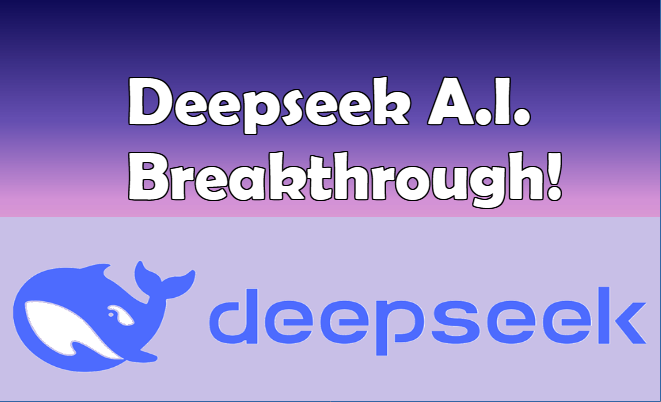Steerco meetings, also known as steering committee meetings, are essential gatherings that play a crucial role in overseeing and directing projects or initiatives within an organization. These meetings serve as a platform for key stakeholders to come together and make strategic decisions, provide guidance, and ensure the successful execution of critical initiatives. Typically, steerco meetings involve high-level executives, department heads, project managers, and other individuals with decision-making authority. The purpose of the meeting is to review the progress, performance, and overall health of the project or initiative under consideration. It serves as an opportunity for stakeholders to align their goals, exchange information, and collectively address any challenges or issues that may arise. During a steerco meeting, participants often receive updates on the project’s status, including milestones achieved, key deliverables, and potential risks or roadblocks. These updates can be presented through reports, presentations, or discussions, providing a comprehensive view of the project’s trajectory. Stakeholders may also review financials, resource allocation, and project timelines to ensure that the initiative remains on track and within budget.

One of the primary functions of a steerco meeting is decision-making. Stakeholders have the opportunity to evaluate proposed actions or recommendations and provide their input and approval. This decision-making process can involve prioritizing tasks, approving budget revisions, resolving conflicts, or making adjustments to the project scope. The steerco meeting acts as a forum for constructive discussions and enables the collective wisdom of the stakeholders to shape the project’s direction. Also, steerco meetings facilitate effective communication and collaboration among the stakeholders. By bringing together individuals from different departments or areas of expertise, these meetings promote a holistic understanding of the project and encourage cross-functional coordination. Stakeholders can share their insights, perspectives, and concerns, fostering a collaborative environment where diverse viewpoints are considered, and potential issues are addressed promptly. The steerco meetings often serve as a platform for strategic planning and long-term visioning. Stakeholders may discuss future initiatives, evaluate market trends, or explore opportunities for growth and innovation. These discussions enable organizations to align their projects with broader strategic objectives and adapt their approach to changing circumstances, ensuring that resources are allocated wisely and that initiatives remain relevant and impactful.
To summarise, steerco meetings are critical forums for decision-making, communication, collaboration, and strategic planning within an organization. By bringing together key stakeholders, these meetings enable effective oversight and ensure that projects or initiatives are successfully executed, meeting their intended objectives.
CONTENT
When to initiate steerco meetings
Initiating steerco meetings is beneficial in various situations where a project or initiative requires strategic direction, oversight, and decision-making from key stakeholders. Here are some common scenarios that warrant the initiation of steerco meetings:
1. Project kick-off: At the start of a project, it is crucial to bring together key stakeholders to establish a shared understanding of project objectives, scope, and expectations. A steerco meeting can provide a platform for stakeholders to align on project goals, define roles and responsibilities, and establish a governance framework for the project.

2. Project milestones or major deliverables: Steerco meetings are particularly valuable when a project reaches significant milestones or major deliverable points. These meetings allow stakeholders to review progress, evaluate outcomes, and provide guidance on the next steps. Steerco meetings ensure that stakeholders are actively involved and informed during critical phases of the project.
3. Addressing project challenges or risks: When a project faces challenges or risks that require immediate attention, a steerco meeting can be initiated to discuss the issues, explore potential solutions, and make informed decisions. The collective expertise and authority of the stakeholders can help identify mitigation strategies and steer the project back on track.
4. Budget or resource allocation decisions: Steerco meetings are beneficial when significant budget or resource allocation decisions need to be made. These meetings enable stakeholders to review financial aspects of the project, evaluate resource requirements, and make informed decisions regarding budget adjustments or resource reallocation based on changing project needs or priorities.
5. Cross-functional coordination and collaboration: Projects that involve multiple departments or functional areas benefit from steerco meetings to facilitate cross-functional coordination and collaboration. These meetings bring together stakeholders from different disciplines, fostering a shared understanding, promoting information exchange, and ensuring that project efforts are aligned and integrated across various areas.
6. Regular project review and performance assessment: Steerco meetings are essential for ongoing project review and performance assessment. Regularly scheduled meetings allow stakeholders to evaluate progress against set objectives, assess key performance indicators, review project metrics, and identify areas for improvement. These meetings support continuous project monitoring and enable stakeholders to make informed decisions based on up-to-date information.
7. Strategic planning and alignment: Steerco meetings play a critical role in strategic planning and alignment. These meetings provide an opportunity to discuss the project’s alignment with the organization’s strategic objectives, explore emerging opportunities, and adapt the project’s direction as needed. Steerco meetings ensure that projects remain aligned with the organization’s long-term vision and goals.
Overall, initiating steerco meetings is advisable when strategic decisions, oversight, and collaboration from key stakeholders are required. These meetings provide a structured and inclusive forum for decision-making, problem-solving, and project guidance, ensuring project success and alignment with organizational objectives.
Steerco organizers
Steerco meetings are typically organized by the project sponsor or the individual or group responsible for overseeing the project or initiative. The project sponsor is usually a senior executive or a high-level manager who has the authority and accountability for the project’s success.
The project sponsor plays a crucial role in setting up and organizing the steerco meetings. They are responsible for determining the frequency and agenda of the meetings, inviting the relevant stakeholders, and ensuring that all necessary information and resources are available for productive discussions.
The project sponsor may collaborate with project managers, team leads, or other stakeholders to gather updates, prepare reports, and create the agenda for the steerco meeting. They may also seek input from other executives or department heads to ensure that the meeting covers all critical aspects of the project and addresses the interests of various stakeholders. In some cases, organizations may have a dedicated project management office (PMO) that assists in organizing and coordinating steerco meetings. The PMO provides support and guidance in project governance and helps facilitate the communication and decision-making processes during steerco meetings. Ultimately, the responsibility for organizing steerco meetings lies with the project sponsor or the designated individual or group accountable for the project’s success. They are entrusted with the task of ensuring that the meetings are well-structured, inclusive, and effectively drive the project towards its objectives.
Steerco stakeholders
Identifying stakeholders for a steerco meeting is a crucial step in ensuring that all relevant parties are included in the decision-making process. Here are some key steps to help identify stakeholders for a steerco meeting:
- Define the project scope and objectives: Start by clearly defining the project and its goals. Identify the key areas and departments that will be impacted by the project’s outcomes.
- Identify internal stakeholders: Internal stakeholders are individuals or groups within your organization who have a direct interest or influence in the project. This may include senior executives, department heads, project managers, team leads, subject matter experts, and those responsible for implementing or supporting the project.
- Identify external stakeholders: External stakeholders are individuals or groups outside of your organization who may have an interest in or be impacted by the project. This may include customers, clients, suppliers, regulatory bodies, partners, or other organizations or entities that have a vested interest in the project’s outcomes.
- Assess their level of influence and impact: Evaluate each stakeholder’s level of influence and impact on the project. This will help determine their level of involvement and whether they should be invited to the steerco meeting. Consider factors such as decision-making authority, resources they can provide, expertise they bring, or their potential to affect project success.
- Consider perspectives and expertise: Look beyond hierarchical positions and consider the different perspectives and expertise that stakeholders can bring to the meeting. Include representatives from different departments, disciplines, or functional areas to ensure a comprehensive view of the project.
- Prioritize stakeholders: Based on their level of influence, impact, and expertise, prioritize stakeholders who should be involved in the steerco meeting. Consider the significance of their role and their contribution to the project’s success.
- Extend invitations: Once you have identified the key stakeholders, send out formal invitations to the steerco meeting. Clearly communicate the purpose, agenda, and expected outcomes of the meeting to ensure their understanding and participation.
It is important to keep in mind that stakeholder identification is an ongoing process, and as the project progresses, new stakeholders may emerge or existing ones may become more or less relevant. It’s essential to maintain open communication channels and regularly assess and update the stakeholder list to ensure that the steerco meetings continue to include the right individuals throughout the project lifecycle.
Steerco Benefits
Steerco meetings offer several benefits to organizations and projects. It helps arrive at critical decision making and also to identify where the project is heading. Below are some of the key benefits it has –
- Strategic decision-making: Steerco meetings provide a platform for key stakeholders to make strategic decisions. By bringing together individuals with decision-making authority, steerco meetings enable timely and informed decisions that align with organizational objectives and project goals. This helps ensure that the project stays on track and addresses any emerging challenges or opportunities.
- Clear direction and alignment: Steerco meetings help ensure that all stakeholders are aligned on the project’s direction. Through discussions and presentations, stakeholders gain a comprehensive understanding of the project’s status, goals, and challenges. This alignment fosters a shared vision and promotes collaborative decision-making, reducing the risk of miscommunication or conflicting priorities.
- Effective governance and oversight: Steerco meetings provide a governance structure for projects. The meetings serve as a forum for project sponsors, executives, and other stakeholders to monitor and oversee the project’s progress, performance, and compliance with established guidelines and standards. This level of oversight helps identify and address issues promptly, mitigating risks and enhancing project success.
- Improved communication and collaboration: Steerco meetings facilitate effective communication and collaboration among stakeholders. By bringing together individuals from different departments or areas of expertise, these meetings promote cross-functional collaboration and a shared understanding of project objectives. Stakeholders can exchange information, share insights, and collectively address challenges, fostering a collaborative environment that enhances project outcomes.
- Enhanced stakeholder engagement: Steerco meetings provide a platform for stakeholders to actively participate in the decision-making process. By involving relevant individuals in the meetings, organizations demonstrate their commitment to stakeholder engagement and create opportunities for stakeholders to contribute their expertise, perspectives, and insights. This engagement fosters a sense of ownership and accountability, leading to increased commitment and support for the project.

- Timely issue resolution: Steerco meetings offer a structured platform for stakeholders to address and resolve project issues. By discussing challenges, risks, or conflicts during the meetings, stakeholders can collectively develop solutions or make decisions to overcome obstacles and keep the project on track. This timely issue resolution minimizes delays and ensures that projects progress smoothly.
- Strategic alignment and resource allocation: Steerco meetings enable organizations to align projects with their broader strategic objectives. By discussing project priorities, resource allocation, and potential trade-offs, stakeholders can ensure that resources are allocated strategically to initiatives that deliver the most value to the organization. This alignment of resources and priorities optimizes the organization’s overall performance and helps achieve strategic goals.
Steerco meetings provide a range of benefits, including strategic decision-making, clear direction and alignment, effective governance and oversight, improved communication and collaboration, enhanced stakeholder engagement, timely issue resolution, and strategic alignment of resources. These benefits contribute to the successful execution of projects and the achievement of organizational objectives.
Frequency of steerco meetings
The frequency of steerco meetings for a project can vary depending on several factors, including the project’s complexity, duration, and criticality, as well as the organization’s culture and decision-making processes. However, here are some general guidelines for determining the frequency of steerco meetings:
- Project phase and timeline: During the initial stages of a project, when planning, scoping, and setting up the project are taking place, steerco meetings may be more frequent. This helps ensure alignment, establish governance structures, and set the project on the right track. As the project progresses, the frequency of steerco meetings may reduce but should still be sufficient to address important milestones, decisions, or challenges.
- Project size and complexity: The size and complexity of the project can influence the frequency of steerco meetings. Large-scale projects or those involving significant risks, dependencies, or multiple stakeholders may require more frequent meetings to ensure proper oversight and decision-making. Smaller projects with fewer complexities may have less frequent steerco meetings.
- Decision-making needs: Consider the frequency at which key decisions need to be made for the project. Steerco meetings should be scheduled at a frequency that allows for timely decision-making and issue resolution. If there are critical decisions to be made or frequent updates required, more frequent steerco meetings may be necessary.

- Project milestones and deliverables: Steerco meetings should align with project milestones or major deliverables. As the project reaches important stages, such as completion of key deliverables, significant progress, or critical decision points, it is advisable to schedule steerco meetings to review and provide guidance on these milestones.
- Organization’s culture and availability of stakeholders: Consider the availability and schedules of the stakeholders involved in the steerco meetings. Find a balance that accommodates the needs and availability of the stakeholders while ensuring that the meetings occur with reasonable regularity.
In practice, steerco meetings can occur monthly, quarterly, or even semi-annually, depending on the project and organizational context. It is important to strike a balance between providing sufficient oversight and avoiding excessive meetings that may impede progress. Regularly reassess the need for steerco meetings throughout the project to ensure that they continue to serve their purpose and provide value to the project and stakeholders.





You must participate in a contest for among the finest blogs on the web. I’ll advocate this web site!
Hey There! Thank you so much. Does such a contest really exist? How or where does one participate for it.